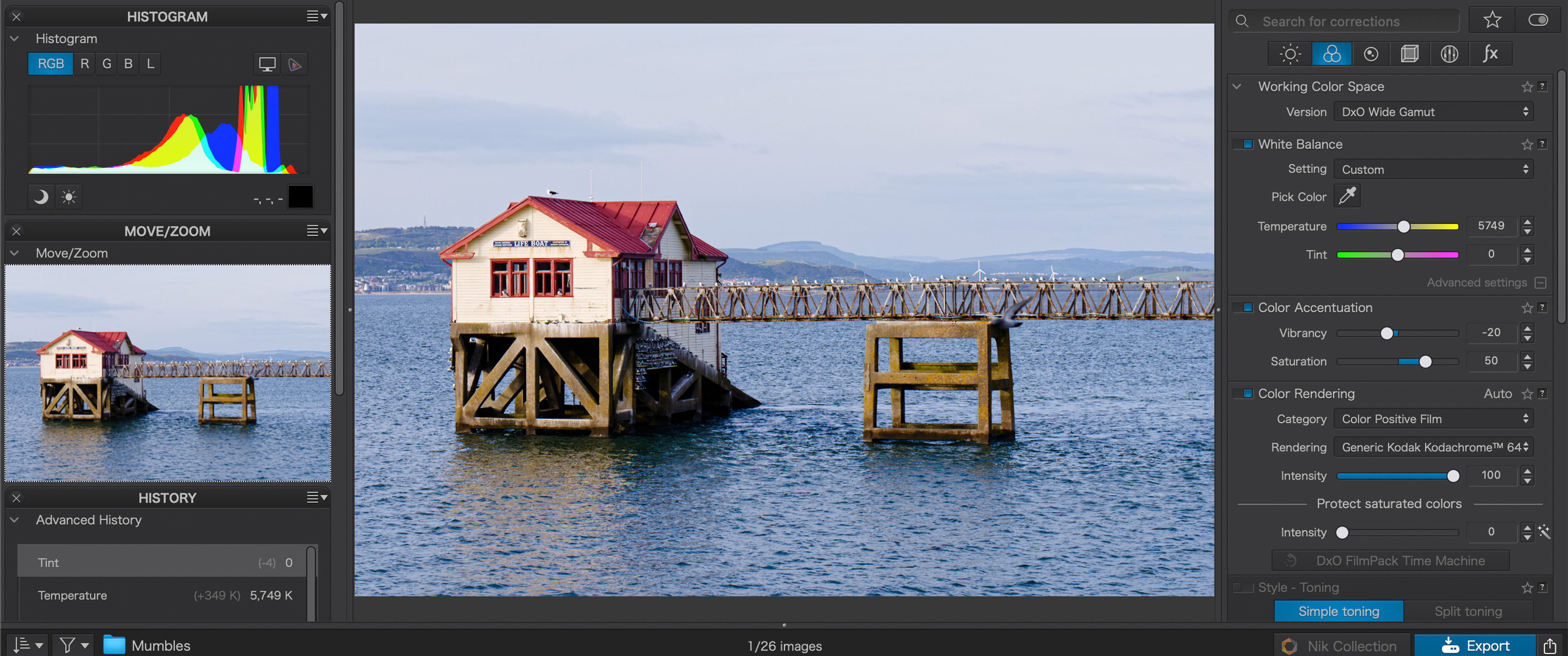Space Verdict
DxO PhotoLab 6 once stood out for offering revolutionary AI noise reduction, however, now that other image editing programs are starting to offer more AI features, there isn't as much to make DxO PhotoLab 6 seem special.
Pros
- +
DeepPrime XD provides excellent AI noise removal
- +
ClearView Plus effectively reduces haze in images
Cons
- -
No stacking options
- -
Other image editing programs are hot on their heels
Why you can trust Space.com
DxO PhotoLab 6 is the latest version of the renowned photo editing software that continues to set a high standard in the world of digital image processing. Designed to cater to both amateur and professional photographers, DxO PhotoLab 6 offers a comprehensive set of tools and features that enable users to transform their RAW images into stunning works of art — they claim their software is 'the most advanced, end-to-end, RAW photo editing software'.
Whether you're looking to enhance the details in your landscape shots, reduce noise in low-light images, or fine-tune the colors and exposure of your portraits, DxO PhotoLab 6 has you covered. One of the standout features of DxO PhotoLab 6 is its state-of-the-art noise reduction technology — making it a very attractive option for astrophotographers.
It can be tricky to decide which one of the best photo editing apps to go for as there are so many options, so we've tested out DxO PhotoLab 6 using images taken on some of the best cameras and best lenses and weighed up the pros and cons of this software to help you make an informed decision.
DxO PhotoLab 6 review 2023
DxO PhotoLab 6: Pricing and Subscription
There are two versions of DxO PhotoLab 6 — Essential and Elite. As it says on the tin, the Essential version contains all the basic tools we've come to expect from image editing software, like optical corrections, basic image adjustments (exposure, contrast, white balance, etc.) and smart lighting optimization. The Elite version includes everything in the Essential version, plus advanced features like PRIME noise reduction, ClearView Plus, and DxO Smart Lighting. These features provide more refined and precise control over noise reduction, contrast enhancement, and lighting optimization. For astrophotographers, we'd recommend the Elite version for the DeepPrime XD noise reduction.
At the time of writing, Essential is $139 and Elite is $219 and both are available to purchase without a subscription. They also offer options to buy now pay later or spread the cost over multiple payments, which can make the software more accessible and affordable. Version 6 was released in October 2022, just a year after version 5. Users can also download a 30-day free trial to test it out before deciding whether to purchase.
DxO PhotoLab 6: User Interface
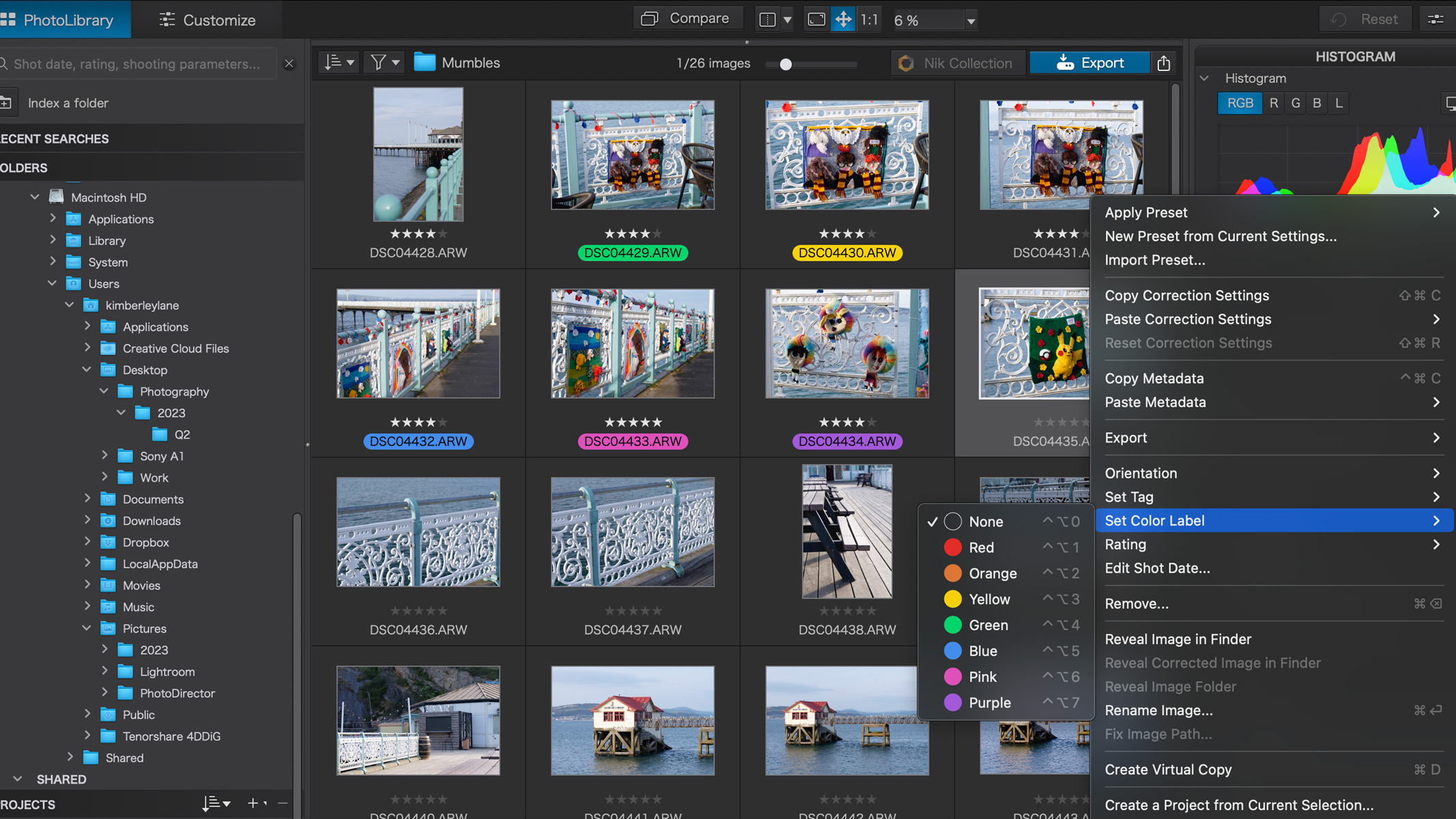
- Customizable layout
- Create Projects to keep your images organized
- Has two main workspaces — Photo Library and Customize.
The main workspace consists of the image preview window, surrounded by panels for tool selection, image adjustments, and image information (a pretty standard layout that many software makers adopt). It strikes a great balance between simplicity and functionality, though it may be a little overwhelming for anyone not familiar with image editing software and unsure about what many of the tools do, as some of them are named differently from other programs.
We think the tool panels are logically organized and offer a wide range of editing options, and you can even rearrange and favorite them to tailor the program to you and your preferences. From basic adjustments like exposure, contrast, and white balance, to more advanced features like noise reduction and local adjustments, there are plenty of options to edit your images as simply or as in-depth as you'd like.
Breaking space news, the latest updates on rocket launches, skywatching events and more!
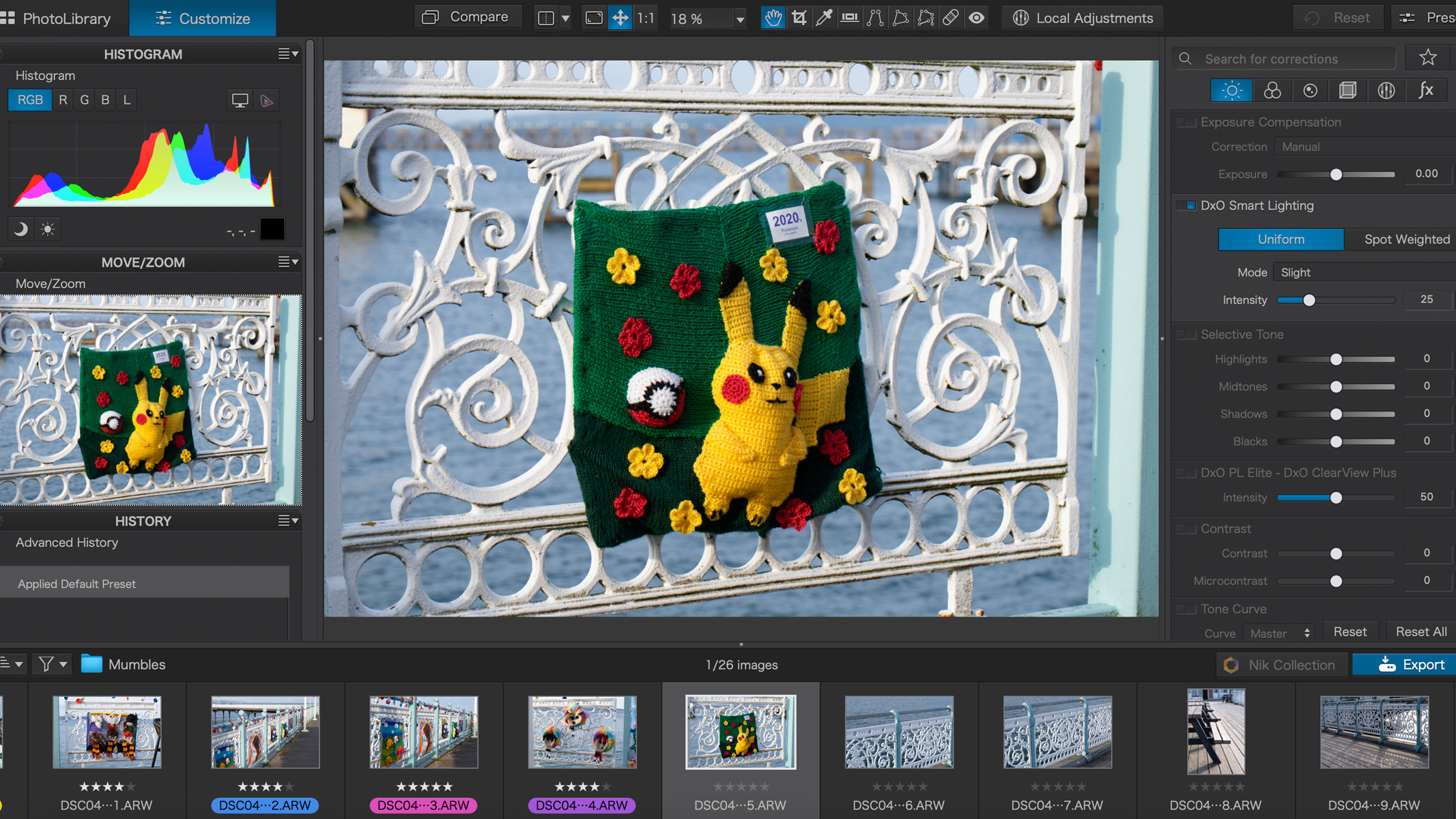
The library acts as a centralized hub where you can import, browse, and organize your entire photo collection. It gives you a clear overview of your images, allowing you to quickly locate and access the photos you want to work on. Within the library, you can apply filters, sort images by various criteria such as date or rating and create virtual copies of your photos for different editing purposes. This helps you to streamline your workflow and keep your photo collection well-organized.
You can create Projects and Project Groups in order to group and organize related photos together — essentially the same thing as the Collections in Lightroom, although, in our opinion, not quite as aesthetically pleasing.
DxO PhotoLab 6: Key Features
- ClearView Plus boosts contrast and clarity in one click
- Soft Proofing ensures accurate prints
- Has all the editing tools you'd expect and more
The ClearView Plus feature in DxO PhotoLab 6 is a very powerful tool that boosts local contrast and clarity, bringing out amazing details and textures in your images. It effortlessly cuts through any haze, atmospheric interference, or other elements that can obscure the intricate details in your pictures.
This feature is useful for any type of photography to boost contrast, but we can really see it coming into its own for landscape photography, and it also has its place in astrophotography, too. We tried it out on an astro image and were really impressed with the results — if only to streamline your workflow and speed up your editing process. We also liked that you can adjust the intensity, as it's not a one-size-fits-all kind of feature and too much contrast can create some horrible-looking photos.
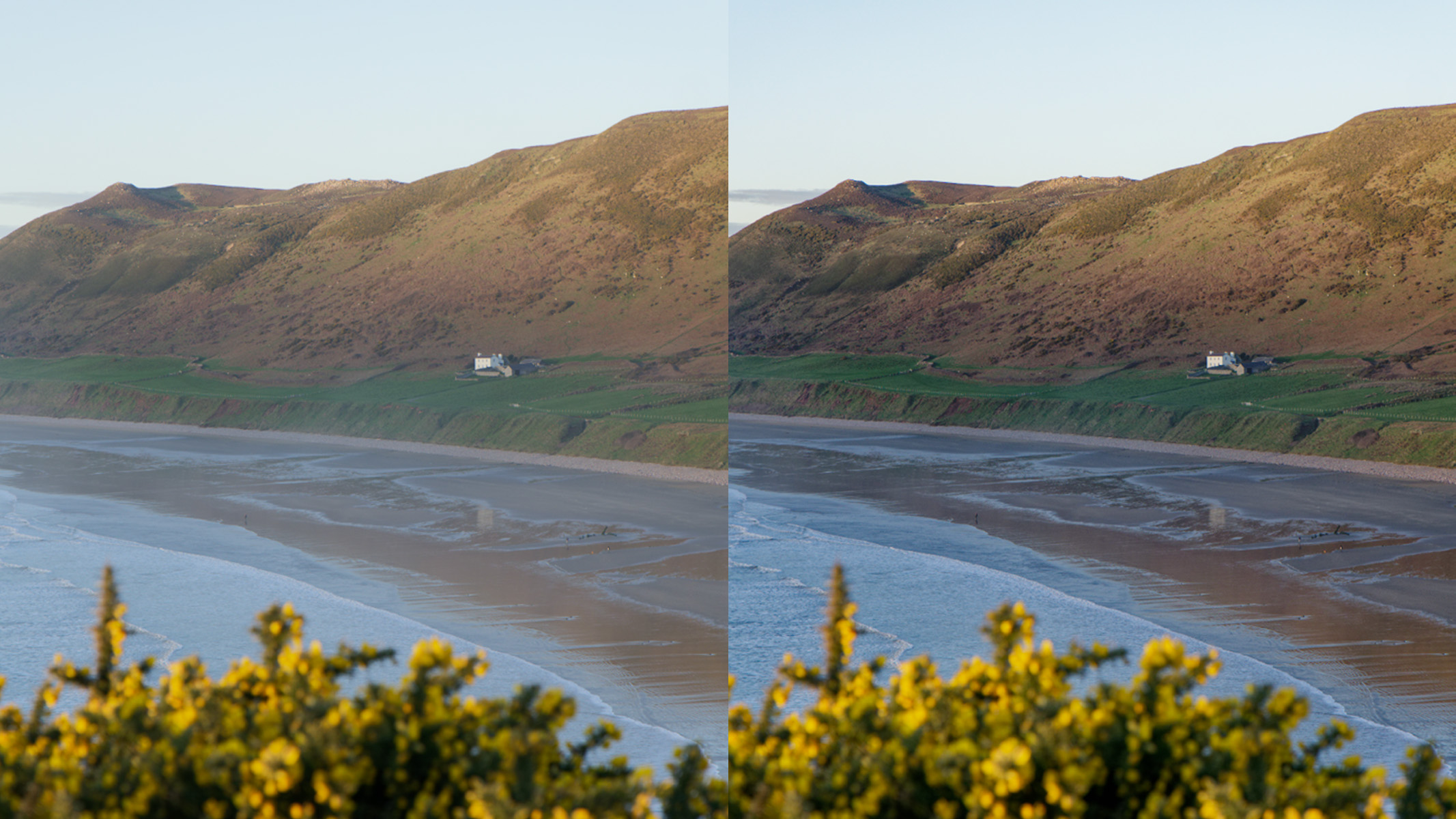
Another useful feature is the new Soft Proofing mode, which is a great tool for anyone who likes to print their images. You can ensure that your prints are as accurate as possible by activating ink and paper simulations — a very handy feature as it can be a bit of a lottery when sending images off for print. This feature is only available in the Elite version of PhotoLab 6, though.
The UPoint adjustments are also pretty neat (essentially just local adjustments, but with a fancy name). You just click on the area of an image you want to edit, and it'll bring up a wheel of options including a brush tool, auto mask, control point, control line, graduated filter and more. Then for each of those, there's an array of adjustment bars for all the main adjustment settings (lighting, color and detail) Although it's basically the same as what you can do in many other image editing programs, we particularly like the way they're presented in DxO PhotoLab 6.
DxO PhotoLab 6: Astrophotography Features
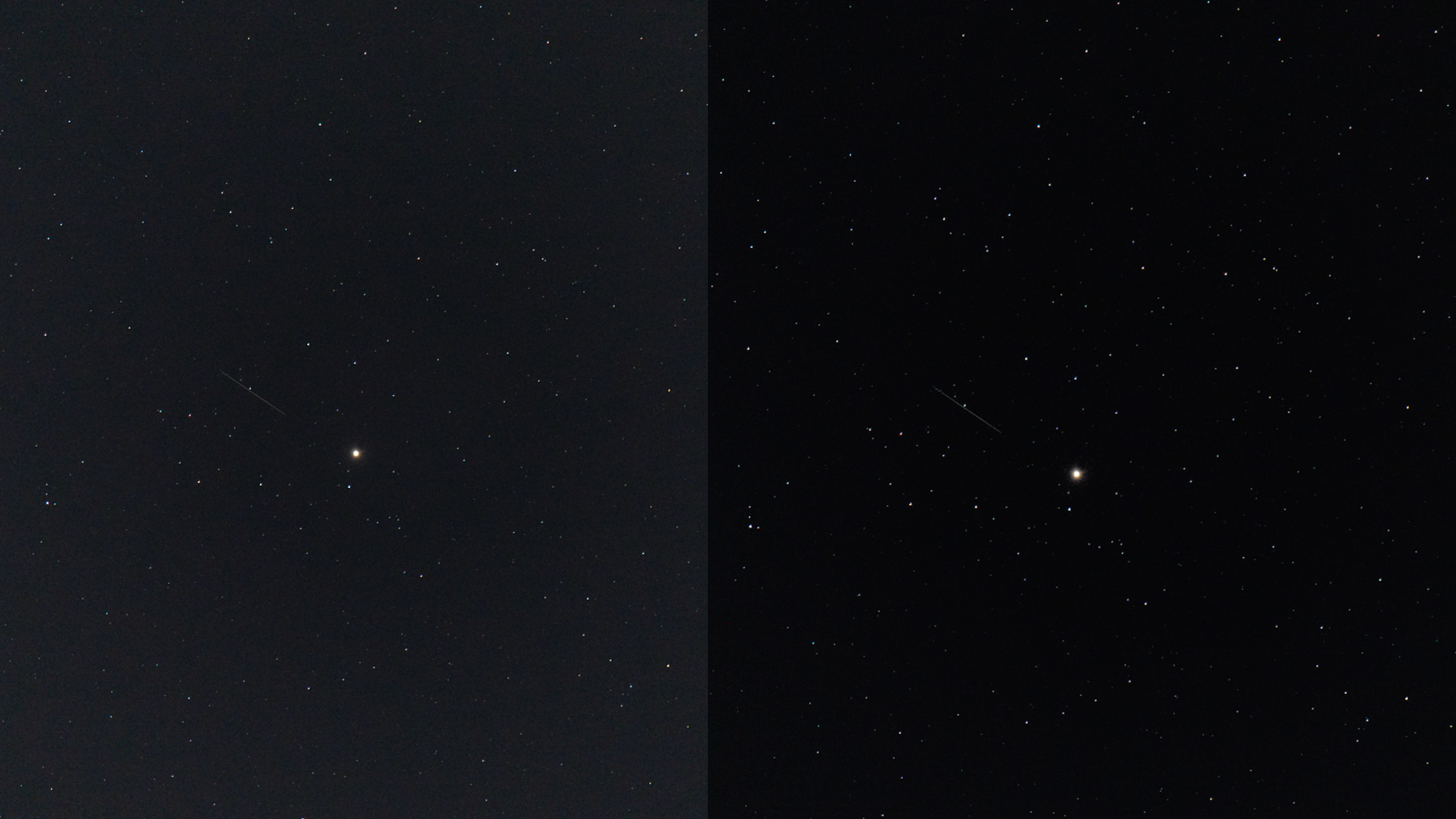
- DeepPrime XD noise removal is incredibly useful for astrophotographers
- Other software makers also now introducing AI noise removal
- UPoint local adjustments would be great for adjusting colors
Although DxO PhotoLab 6 isn't a dedicated astrophotography program, we think there is one specific feature that is incredibly useful for astro-shooters. The DeepPrime XD feature, which they claim is 'noise removal like you've never seen before' uses AI to reduce noise while keeping incredible details. While we aren't denying that it's an incredibly impressive feature of the software and absolutely does the job like they say it does, other photo editing software giants like Adobe have also very recently introduced AI into their programs, including AI noise removal, which does sort of water down the USP of DxO PhotoLab 6, to an extent. That said, we do think that DxO PhotoLab 6's DeepPrime XD does beat Lightroom's AI noise removal when it comes to maintaining clarity and brightness — although Lightroom is constantly improving, so who knows how long until they overtake DxO.
We compared the DeepPrime XD in DxO PhotoLab 6 to Lightroom's AI denoise tool — take a look at the results for yourself. Keep in mind that this feature is only available in the Elite version.

Should you buy DxO PhotoLab 6?
Had you asked us a year ago, we'd have had absolutely no hesitation in recommending DxO PhotoLab 6 for its noise removal features alone, which are incredible for dedicated astro shooters. However, as many other programs are now nipping at their heels when it comes to AI noise reduction, DxO PhotoLab 6 now doesn't seem as special as it once did, making it harder to recommend. The ClearView Plus feature is still pretty neat, but in reality, it wouldn't actually take that much more time to recreate a similar effect using the contrast, clarity and dehaze sliders in other programs.
If, however, you are thinking of upgrading from version 4 or 5 (which you can do for $75 for Essential or $99 for Elite), then we think this price point makes it more worthwhile, especially as you only have to pay the one-off fee for the license rather than an ongoing subscription. You can also use DxO PhotoLab 6 as a Lightroom plugin, so you can do the majority of your edits in Lightroom and head over to PhotoLab 6 for its AI features.
If DxO PhotoLab 6 isn't for you
One feature we felt was missing from DxO PhotoLab 6 is the ability to stack and align images together to edit multiple exposures, which astrophotographers often do. We think that this feature coupled with the DeepPrime XD could make DxO PhotoLab 6 pretty hard to beat. That said, if you're wanting the ability to stack multiple exposures together, check out Affinity Photo 2. We found the astrophotography stack tool incredibly efficient and useful when we reviewed Affinity Photo 2, not to mention the plethora of other tools that make it useful for astro editing.
If, however, you're looking for a powerful editing program on a subscription model, look no further than Adobe Lightroom. Lightroom is the program that DxO PhotoLab 6 is most often compared to, and it's pretty much the industry standard when it comes to image editing. Although they've only just introduced AI editing tools into their arsenal, we think that, in time, they could very well rival DxO PhotoLab 6's DeepPrime XD noise removal. When we reviewed Adobe Lightroom we gave it 5 stars and thought it was a brilliant program for editing pretty much any style of photo, and we loved its organization tools, too.

Kimberley Lane is a landscape & seascape photographer living in South Wales. Originally using photography as a way to cope with health issues, she aims to portray a feeling of calm and peace through her images. Her work has been featured in a number of national photography magazines.
